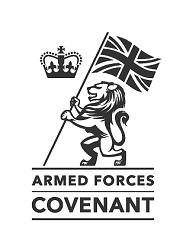|
|
|
World War I...
On 28th June 1914 was an event that triggered a series of events that lead to the Great War, or World War 1. This was
the action by Yugoslav nationalist Gavrilo Princip in Sarajevo when he assassinated Archduke Franz Ferdinand of Austria, who
was the heir to the throne of Austria-Hungary. This inevitable diplomatic crisis was supported by major alliances that had
formed over the end of the 19th century and the formative years of this 20th century. The result
was a global war that began on 28th July 1914 and ended 11th November 1918. One of the deadliest conflicts in history
in which more than nine million combatants and seven million civilians died. The core European
theatre was dominated by the Triple Entente of the United Kingdom, France and the Russian Empire {herein referred to as the
Allies}, against the Central Powers of Germany, Austria-Hungry. Italy was initially part of this Central Powers alliance
but Austria-Hungry did not comply with the terms of the alliance and Italy backed out, to join the Allies soon after. Those four years, three months and a week saw the Allies expand to include France, United Kingdom, British India,
Belgium, Greece, Portugal, South Africa, Newfoundland, Canada, Australia, New Zealand, Russia, Italy, United States,
Japan, Serbia, Romania, Montenegro and others. The Central Powers of Germany, Baden, Saxony, Württemberg, Prussia,
Bavaria, Austria-Hungary, Bulgaria, The Ottoman Empire and others. Germany quickly invaded Belgium and Luxembourg
and moved on towards France, leading Britain to declare war on Germany. This halted the German march on to Paris and created
what ultimately became known as the WESTERN FRONT. This soon became a battle of attrition, with a trench line that would change little until 1917. The Mountain
War Front was the SOUTHERN FRONT line to control and win the Eastern Alps and Venetian Plain between principlly the Central Powers [mostly
Austria-Hungary] and the Allies [mostly Italy] for the control of Italy's northern aspects with Austria. These were
what are now South Tyrol and Trentino along with the northern Dalmatia and Austrian Littoral regions and were hard won; though
taking virtually the whole war to achieve that. The EASTERN FRONT was dominated by the Russian Army which crushed the Austria-Hungary uprising, but was stopped in its tracks by the Germans
as it attempted the invasion of East Prussia. The complication of the Eastern Front was added to by The Ottoman Empire joining
the War in November 1914 which produced fronts in the Caucasus, Mesopotamia and the Sinai. Italy and Bulgaria entered the
War in 1915, followed by Romania in 1916 and then the United States joined in 1917. The four major imperial
powers of Austria-Hungary, The Ottoman Empires, Russia and Germany would all by the end of the War cease to exist. The Ottoman
and Austria-Hungary imperial powers would be dismantled and through the League of Nations being formed, the maps of Southeast
Europe would be redrawn. Independent nations were restored and/or created, and the job of the League of Nations was to prevent
this sort of conflict from happening again. The imperial powers of Russia and Germany would see substantial
territory loss. The League of Nations had its work cut out and this mandate to prevent conflict saw difficulties not just
from the weakened nations, but from renewed European Nationalism and of Germany feeling humiliated in defeat [hence Fascism's
rise]. A turning point in the Great War was the Russian Government collapse of March 1917, this led to a resolution
being agreed in November 1917 with the Central Powers which was their exit from the War. A year later on 4th November 1918
the Austria-Hungary Empire agreed an armistice. This coincided with the Allies 1918 combined German offensive along the Western
Front, which culminated in the Allies ultimately and successfully entering their trenches. Germany seeing the inevitable outcome
agreed an armistice on 11th November 1918, ending the war in victory for the Allies. This was not just a land
war - many forget the Naval and Air elements of this War, as do they the significant advances in technology and medicine,
to name two, that came from this conflict. This was though at high cost and we must never forget the legacy for the peace and security of the world. In contrast to modern conflicts and war zones, Journalists of the day were viewed
by the War Office as helping the enemy and faced the death penalty for reporting detailed articles on specific aspects of
the war - through the charge of Treason. ......... o O o ......... We have added a number
of further pages and Picture Galleries to our website for you of The National Memorial Arboretum, the Ypres Salient, Flanders & The Menin Gate, Nord Pas de Calais, Somme, Vimy Ridge, Verdun and:
Enter content here Enter content here Enter content here |
||||||||||||||||||||||
AREA17: So that we may all remember those that served, those injured and those that fell for the peace
and security of all...


